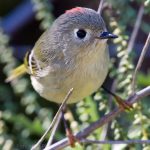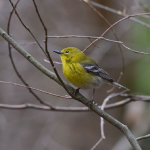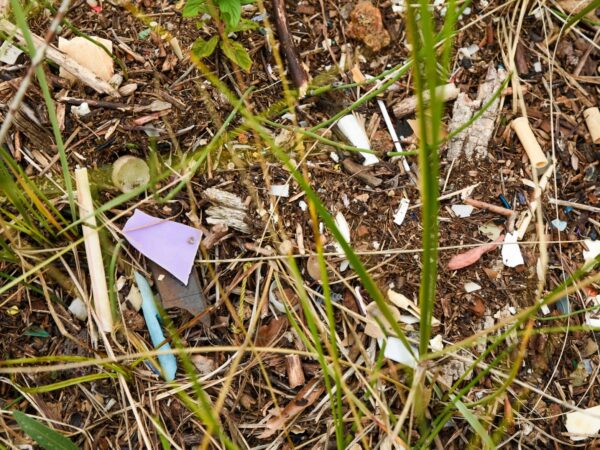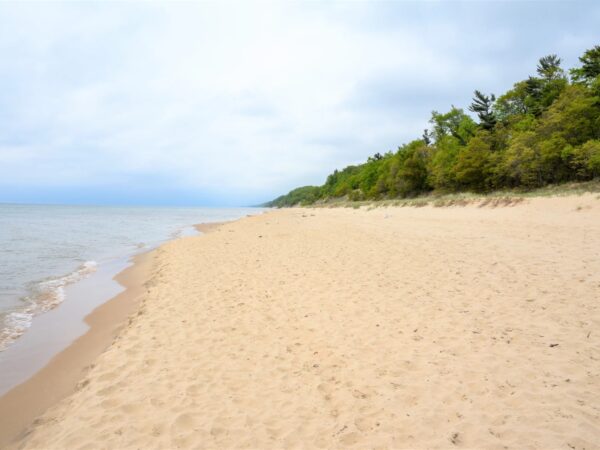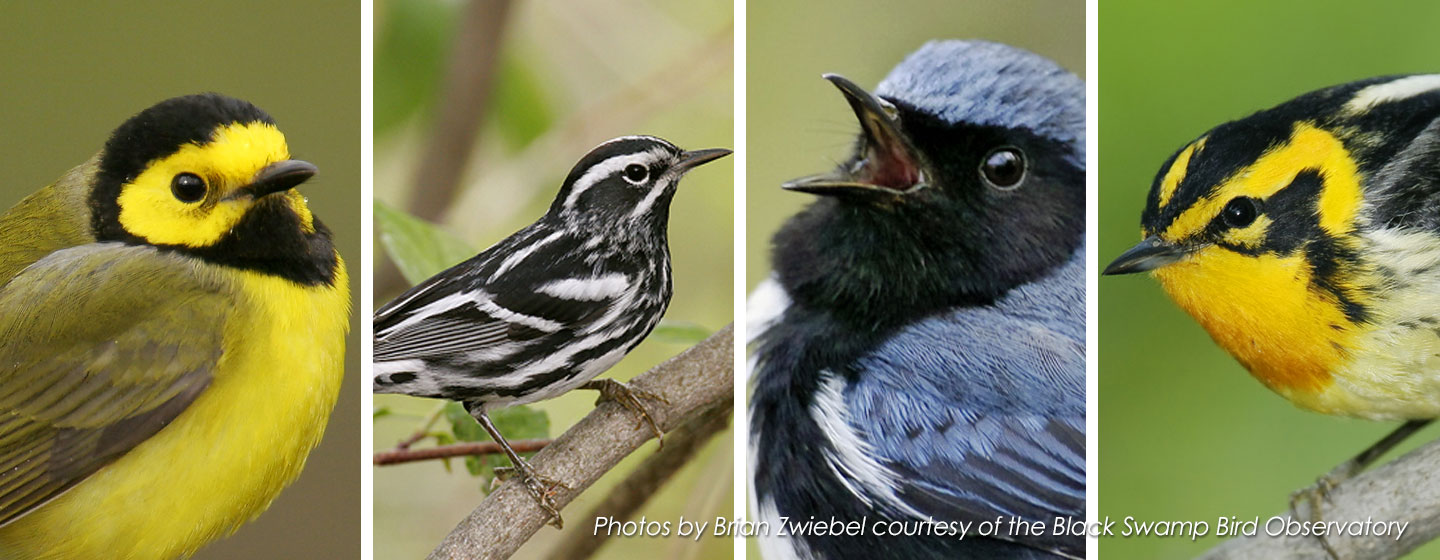
“The Biggest Week in American Birding” gets underway, May 4-13
O.K. it’s not for everyone.
We are talking about masses of people wearing bad hats with binoculars and cameras hanging around their necks who make strange noises at bushes and trees trying to flush out warblers. They are an unusual breed that thrills at the flit of the bright red wing of a Scarlet Tanager and can be brought to tears by the throaty call and iridescent blue reflection of the feathers of an Indigo Bunting.
They crouch in hedges. They can lie low in a swamp for hours to identify a tiny wing bar or hone in on an eye ring.
I admit it: I am one of them.
And many of us will be gathered along the shores of Western Lake Erie this weekend.

Blackburnian Warbler Setophaga fusca, Magee Marsh boardwalk, Ohio, Photo by Paul Hurtado via wikimedia cc 2.0
The Great Lakes hold many places where birds gather for the Spring Migration. But Northwestern Ohio is special. That’s because as millions of songbirds wing their way north, they choose to take a break along the shores and give “bird nerds” like me the gift of their presence, however fleeting it may be.
Lake Erie is a long crossing, so the birds stop to rest along the corridors and waterways that line the lake to recharge, to feed, and wait for the right conditions before they get on their way.
Jasmine Cupp is communications director at Black Swamp Observatory, the organization that came up with the idea for the festival. She tells Great Lakes Now what’s called “The Biggest Week in American Birding” will be celebrating its 10th year next spring. She says the festival originated because “we decided we wanted to get people outside to celebrate the spring migration that happens here. This is an important habitat for that migration to take place.”
Cupp says the first wave of the migration has already occurred. She has sighted Ruby Crowned and Golden Crowned Kinglets, Pine and Myrtle Warblers and several people have heard the song of the Yellow Warbler. She says experts are still measuring the impact of the unusual winter weather in the Great Lakes on the migration, and some expect a delay.
She says in past years, birders have identified more than 150 species during the spring migration.
Cupp says the week has grown in popularity over the past nine years, with participation from people from 50 states, 52 countries and 6 continents. She says the Black Swamp Observatory has recorded a 40-million dollar annual impact to the area west of Cedar Point and east of Toledo.
Even if you’re not in the mood to traipse along the shores and in the swamps, forests and fields, she says the festival brings experts to give lectures and sell their wares – especially special cameras and binoculars – to birders (or would-be birders) of all ages.
There is even what’s called a “Birder’s Prom” during “The Biggest Week in American Birding.” Cupp would not elaborate, and said I had to see it and experience it myself.
I have mostly done my birding alone or with a few friends. This will be my first organized, group experience birding along the Great Lakes.
This weekend, I am heading on a van trip near Maumee Bay called “Oak Openings Preserve Metropark.” Among the many birds I am hoping to see – including the Black and White Warbler, the Blackburnian Warbler, and the Black Throated Blue Warbler – I am keeping my fingers crossed that I will spot the elusive Summer Tanager and Blue Grosbeak.
I’ll keep you posted along the way.
(To find out more, go to The Biggest Week in American Birding)
2 Comments
-
What is the name of the bird second from the left in the initial 4 photo introductory photo?
-
That, according to the photographer Brian Zwiebel, is a Black and White Warbler. http://www.audubon.org/field-guide/bird/black-and-white-warbler
-



